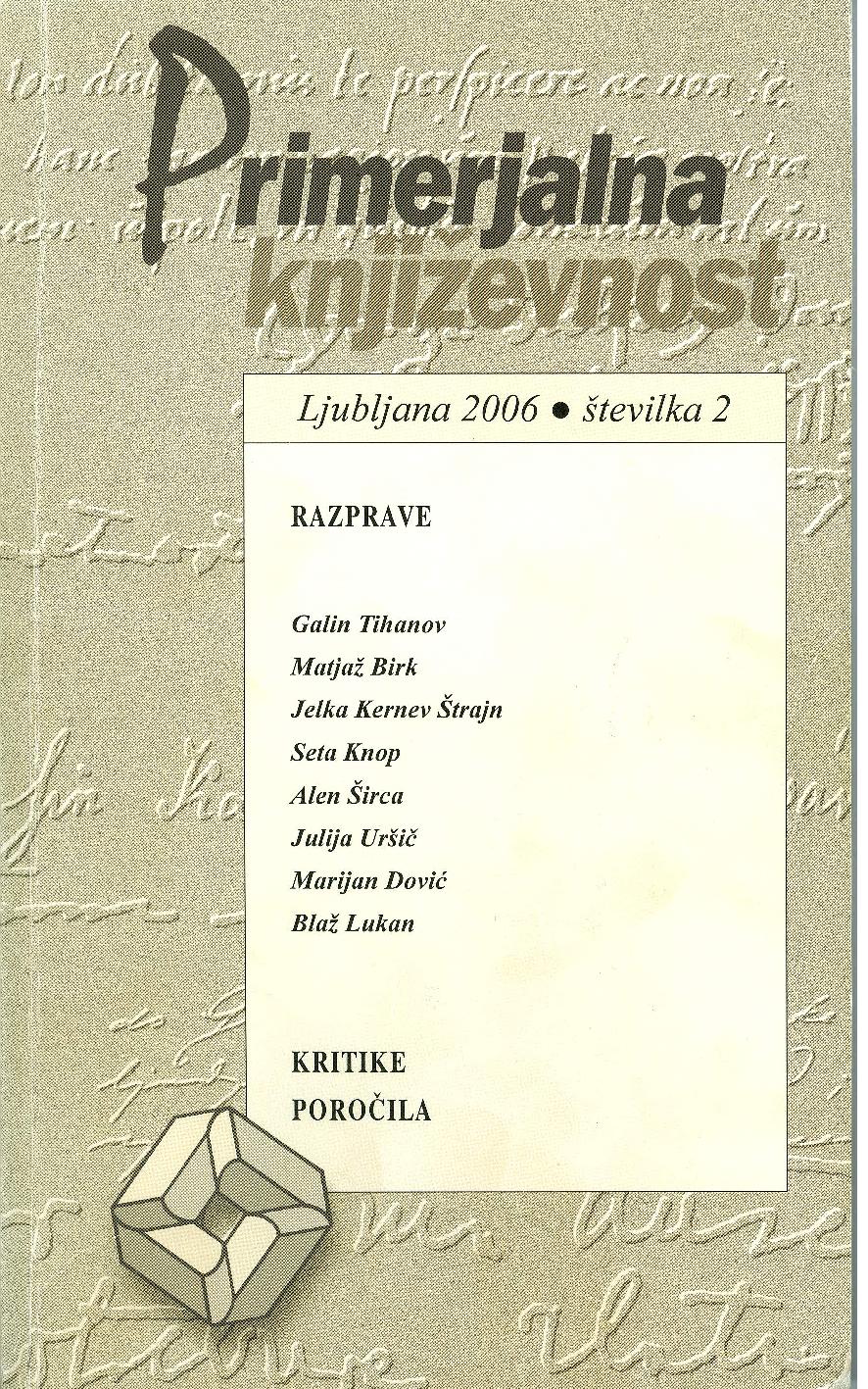Is Allegory Alternative to Symbol? Contribution to the Comprehension of Tropes
Keywords:
literary theory, post-structuralism, rhetorical figures, tropes, allegory, symbol, RomanticismAbstract
The use of the terms “allegory” and “symbol2 was constantly changing in the early periods of literary history. These words were often even used synonymously. The oscillation seems to have been the result of terminological undecidability. Later, in the 19th and 20th century, their use was becoming less a matter of rhetorical strategies than of the fundamental attitude of poets towards the world and of interpreters towards literary texts. European Romanticism played a vital role in this process, with F. Schlegel and Novalis on the one hand, and Kreuzer, Solger, Schelling, and above all Goethe and Coleridge, on the other. Goethe and Coleridge were the first to introduce antithetic and evaluative statements into discussions of allegory and symbol, since they distinctly privileged symbol over allegory. In their opinion, only symbols had the power to bridge the otherwise unbridgeable gap between language and the world, while allegory was believed to refer to meanings which it was incapable of establishing on its own. Their definition stalled the development of the new perception of rhetorical strategies long into the 20th century. It had a crucial impact on adherents of the new criticism and their heirs. The theory of post-structualism was the first to shake this antithetical and evaluative definition of the two terms. Hence it seems that, today, these notions must be understood in accordance with their post-structuralist treatment, which could be denotated by renouncing the Romantic and post-Romantic privileging of the symbol. This is why this article presents Paul de Man’s comprehension of allegory in his “Rhetoric of temporality” in detail. He deserves credit for noticing a contradiction in Coleridge’s definition of symbols, and setting up a hypothesis that regards allegorical structures as perceivable in the most exposed passages in early Romantic poetry. This idea was attacked by Murray Krieger in his polemical paper “A Waking Dream: A Symbolic Alternative to Allegory”, where he eagerly produces arguments against post-structuralist, allegorical interpretations of literature, referring to organicistic poetics and the tradition of the aesthetics of the symbol. The article sums up the polemics between the above-mentioned theoreticians, and in the process introduces a third notion: the irony of irony.References
Behler, Ernst. Frühromantik. Berlin, New York: Walter de Gruyter & Co., 1992.
Coleridge, Samuel Taylor. »The Statesman's Manual«. Collected Works. 6. zv., Lay Sermons. Ur. R. J. White. Princeton: Princeton University Press, 1972 (1. izd. 1816).
De Man, Paul. Slepota in uvid. Prev. Jelka Kernev Štrajn. Ljubljana: Literarno-umetniško društvo Literatura, 1997. (Zbirka Labirinti).
De Man, Paul. Allegories of Reading: Figural Language in Rousseau, Nietzsche, Rilke and Proust. New Haven in London: Yale University Press, 1979.
De Man, Paul. »Murray Krieger: A Commentary«. Romanticism and Contemporary Criticism. Ur. E. S. Burt, Kevin Newmark in Andrzej Warminski. Baltimor in London: The Johns Hopkins University Press, 1993.
Gadamer, Hans-Georg. Resnica in metoda. Prev. Tomo Virk. Ljubljana: Literarno-umetniško društvo Literatura, 2001. (Zbirka Labirinti).
Gellrich, Jesse. »Deconstructing Allegory«. Genre (jesen 1985): 197-213.
Goethe, J. W. Goethes Werke in zwölf Bänden. Ur. Helmut Holtzhauer. Berlin, Weimar: Aufbau Verlag. 1968 (7. zv.)
Hegel, G. W. F. Estetika. Prev. Nikola Popović. Beograd: Kultura, 1970.
Hegel, G. W. F. Vorlesungen über Ästhetik I, Werke 13., Frankfurt/M.: Suhrkamp, 1970.
Historisches Wörterbuch der Rhetorik. Ur. Gert Ueding. Darmstadt: Wissenschaftliche Buchgesellschaft, 1992.
Jauss, Hans-Robert. Estetsko izkustvo in literarna hermenevtika. Prev. Tomo Virk. Ljubljana: Literarno-umetniško društvo Literatura, 1998. (Zbirka Labirinti).
Kant, Immanuel. Kritika razsodne moči. Prev. Rado Riha. Ljubljana: Založba ZRC, 1999.
Keats, John. The Selected Poetry of Keats. Ur. Paul de Man. New York: New American Library, 1966.
Keats, John. John Keats. Prev. Andrej Arko. Ljubljana: MK, 1987. (Zbirka Lirika).
Kernev-Štrajn, Jelka. »Fragment kot spomin vtkan v tekst«. Kako pisati literarno zgodovino danes? Ur. Darko Dolinar in Marko Juvan. Ljubljana: Založba ZRC, 2003.
Krieger, Murray. »A Waking Dream«. Allegory, Myth and Symbol. Ur. Morton W. Bloomfield. Cambridge: Harvard University Press, 1981.
Krieger, Murray. »My Travels with the Aesthetic«. The Revenge of the Aesthetic. Ur. Michael P. Clarck. Berkeley, Los Angeles: University of California Press, 2000. 208–236.
Schlegel, Friedrich. Kritische Schriften und Fragmente. Ur. Ernst Behler in Hans Eichner. Studienausgabe (I-IV). München: Ferdinand Schöningh, 1988.
Schlegel, Friedrich. Spisi o literaturi. Prev. Tomo Virk. Ljubljana : Literarno-umetniško društvo Literatura, 1998. (Zbirka Labirinti).
Sörensen, Beng Allgot. Allegorie und Symbol: Texte zur Theorie des dichterischen Bildes im 18. und frühen 19. Jahrhundert. Frankfurt ob Majni: Athenäum, 1972.
Titzmann, Michael. »Allegorie und Symbol im Denksystem der Goethezeit«. Formen und Funktionen der Allegorie, Synposion Wolfenbüttel. Ur. Walter Haug. Stutgart: J. B. Metzler, 1978. 642–665.


